尺八演奏家 -横山胜也 老师(Yokoyama sensei)
(获邀于全世界五十几个国家巡迴演奏)
http://www.shaku8.com/kenshukan/kousi.html#jyou
http://www.chugoku-np.co.jp/bunka56/bunka56.html
http://www.chugoku-np.co.jp/bunka56/bunka6.html
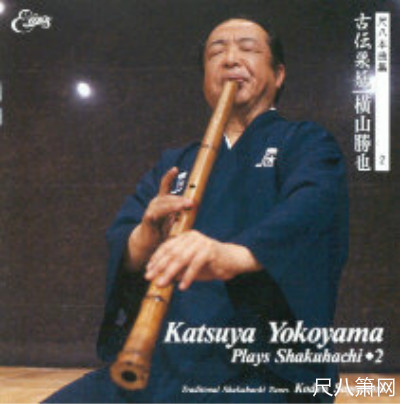
尺八演奏家 -横山胜也 老师
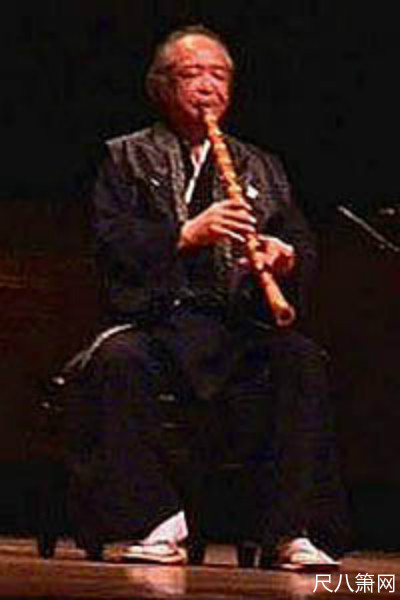
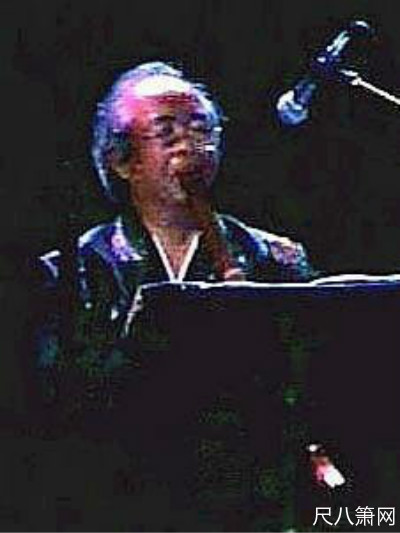
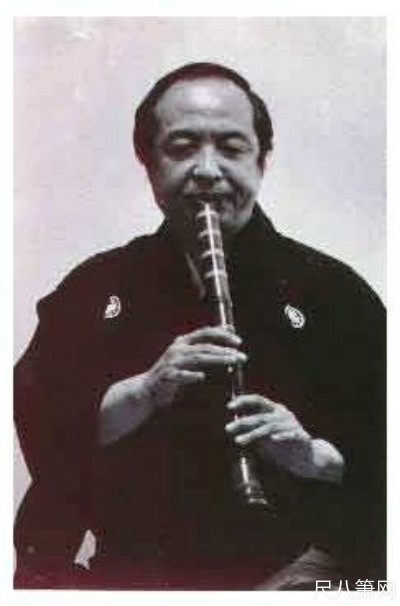
就知名度而言,横山胜也大概是日本尺八史上最具国际知名度的一位尺八演奏家。 除了他的演奏实力,及所代表的流派音乐旋律较容易为西方人士接受外,日本知名作曲家武満彻专为尺八编写的交响曲,由日本最具知名度的指挥家小沢征尔指挥演出,1967年指定由 横山胜也主奏的“November step”为其名扬国际的主因之一,这首曲目让尺八不再是音乐舞台上的配角,第一次站上欧美著名音乐厅主奏的位置,与世界知名交响乐团,管弦乐团在几年内超过100场,在世界各主要演奏厅的合奏,原本备受质疑的尺八音量与西洋乐器的调合等等疑惑,从此受到肯定。再者更透过日本政府经费补助,有计划,且强而有力的文化交流,输出,中短期尺八教师于欧美主要国家类似驻点式的教学(这一部份,找时间翻译整理后刊出),横山 胜也与西方知名乐团全世界50多个国家的巡迴演出,有效吸引了许多的西方人士的目光,进而前往日本学习尺八,将尺八带往全世界,也因而让尺八在短短的十几年间,很快就成为最多西方人士学习的东方乐器.
(以下资料取自横山胜也之国际尺八研修馆,翻译部份因日文→英文,日文→中文都不太理想,合併使用后,还是有一两个字翻译不出来,这一两个字都为地名,应该没有太大影响,如果你有兴趣,可点阅上述网址.)
Profile:
1934/日本静冈県出生。自幼向祖父篁邨、父兰亩学习琴古流?吾妻流尺八。 (1934年12月2日出生)
1959/师事 福田兰童(现代曲)、海童道祖(琴古流古曲)両师。
1960/NHK邦楽技能者育成会第六期卒业。
1961/东京尺八三重奏団を结成。(横山胜也?村冈実?宫田耕八朗)
1962/苏联国家获邀参加世界青年平和友好团,に出席。
1963/日本音楽集団结成、日本音楽的创作与合作计划。
1964/尺八三本会成立 (横山胜也、青木铃慕、山本邦山氏)。超越流派尺八三重奏种类确立。
1967/与小沢征尔指挥纽约交响乐团共同演出武満彻作曲“November step”首演。接著陆续与 芝加哥交响乐团,波士顿交响乐团,多伦多交响乐团,克里夫兰交响乐团,旧金山交响乐团,底特律交响乐团,柏林爱乐乐团,巴黎国立交响乐团,阿姆斯特丹交响乐团,NHK交响乐团,新日本爱乐乐团,都响,东京交响乐团,名古屋管弦乐团,等进行100次以上共同演出。。
1970/日本外务省派遣至 南斯拉夫,捷克斯拉夫(1918-1993,1993年分裂成捷克共和国与斯洛伐克两个国家)演奏旅行。。
1971/芸术选赏受赏。美国克里夫兰独奏会。
1972/芸术祭优秀赏受赏。
1973/芸术祭大赏受赏。香港,伦敦,欧洲巡迴演出。澳洲-雪梨歌剧院 落成纪念音乐会与NHK交响乐团共同演出。
1974/小泽征尔指挥"天地人"于联合国,和平纪念音乐会共同演出。
1975/西武剧场主办「横山胜也的世界」,国立剧场主办「尺八特集」演出。比利时竖笛及旅行Thor的国际竞赛会审查员工作。buruje,斯德哥尔摩,哥本哈根 独奏会。东南亚各国巡迴演出。美国tanguruuddo音乐节演出。
1976/欧洲巡迴演出。
1977/和吉他演奏家渡边范彦先生合演。东京音乐大学教学。
1978/国立剧场「尺八特集」演出。加拿大与温哥华交响乐团共同演出。夏威夷独奏会。巴黎演奏会出演。
1979/夏威夷讲习会。希腊国际现代音乐节演出。巴黎演奏。。
1980/哥本哈根 ,德国科隆演奏。。
1981/英国各地,斯德哥尔摩巡迴演出。
1982/纽约公演。
1983/美国克里夫兰独奏会。夏威夷独奏会。外务省派遣北欧各地公演。南美哥伦比亚,秘鲁,巴西,阿根廷公演。
1984/中国公演。东京艺术大学教学。
1985/新日本爱乐乐团欧洲公演(伦敦,慕尼黑,罗马,巴黎)共同演出。参加日本皇太子夫妻爱尔兰访问公演(爱尔兰,波兰,捷克斯洛伐克,匈牙利,希腊)。在纽约卡内基音乐厅的东京·纽约姊妹城市纪念音乐会演出。中国公演。北美各地演奏旅行。香港亚洲节日演出。
1986/日本天皇御前演奏。筝乐家羽贺干子合演。与小泽征尔指挥 新日本爱乐乐团共同演出"November Step"。
1987/中国(北京,上海)演奏旅行。与澳洲 墨尔本交响乐团共同演出。
1988/成立 国际尺八研修馆(冈山県小田郡美星钉)南美(乌拉圭·阿根廷·智利)演奏旅行(国际交流基金派遣) 。
1989/本曲独唱会(音楽之友社主办)。小泽征尔指挥维也纳乐团巡迴演出。IMAS巴黎200週年纪念公演(法国国营广播邀请)→卫星转播广播。仓敷音乐节招待独唱会。
1990/加拿大温哥华爵士乐音乐节演出。西雅图电脑博览会公演。赫尔辛基·节日公演。奥地利林兹200週年纪念公演。IMAS罗马公演。武満彻60岁记念公演(「秋」「November Step」新星交响楽団)。
1991/日本モービ儿音楽赏受赏(Mobile Music Award)(尺八三本会)。美国节日公演邀请。瑞士公演「November Step」(新日本爱乐乐团、京都乐团)。叙利亚· 突尼西亚· 摩洛哥演奏旅行(国际交流基金派遣)。
1992/日本国内各地独奏会·音乐会公演活动。
1993/日本国内各地独奏会·音乐会公演活动。。美星“国际尺八音楽祭” 准备活动。
1994/第一回美星国际尺八音楽祭(8/26?27?28)举办。
1995/小泽征尔60岁记念演出?坂神大地震爱心公演。日本皇后委託文化厅主办-坂神大震灾爱心公演。
1997年、东京音大教授
1998/第二回 ( Boulder国际尺八音乐节)(落矶山脉下的科罗拉多Boulder波德市)邀请。哥伦比亚、加拿大-多伦多演奏。
1999/第19回传统文化ポーラ赏受赏
1999/第56回中国文化赏受赏
2000/第58回山阳新闻赏受赏 紫绶褒章受章
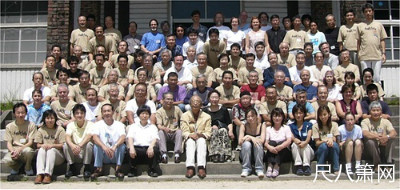
现在/东京音楽大学名誉教授。仓敷作阳大学客座教授。国际尺八研修馆馆长。(兰亩会?竹心会)主宰。
唱片:
横山胜也の世界(ポリドー儿)、
鹿の远音(RVC)、
月草の梦(RVC)、
诗曲(RVC)、
三界轮転(コロンビア)他
录音带:
横山胜也集(福田兰童作品:NHK)、
竹一本(本曲集;音友)、
竹一本?(本曲集;音友)、
日本の响(筝尺八による:音友)、
日本の响?(船川利夫作品集;音友)
C.D.:
鹿の远音(本曲集:音友)、
古传巣笼(本曲集?:音友)、
竹韵(横山胜也の世界:キング)、
福田兰童名曲选(音友)、
竹一本(本曲集:音友)、
竹一本?(本曲集:音友)、
1985年コンサートライブCD
VHS:
尺八入门ピデオ(上下巻:音友)、
ビデオでおぼえる/横山胜也の古典本曲シリーズ(l~8巻、技法集:バンブー)
书籍:
尺八楽の魅力(讲谈社)、
竹之生きる(音楽之友社) 作曲(主な作品):
「音句(おんく)」「魔切(まきり)」「理里有楽(りりうら)」「界(かい)」「虚空籁(こくうらい)」「春吹(しゅんすい)」「响流(ごうる)」「措春(せきしゅん)」「二つの歌」「三界轮転(さんがいりんてん)」「混吨(こん之ん)」「接心(せっしん)」「备中霊慕(びっちゅうれいぼ)」ほか
作曲介绍:(点入内部网址连结,会有每一首曲目较详细资料.)
曲 名
作曲年
魔切(または魔斩)
1975
瑞云
1977
接心
1978
音句
1964
二つの歌
1975
理里有楽partⅡ
1978
接心PartⅢ
1980
三界轮転
1980
虚空籁
1984
春吹
1983
惜春
1981
ザ?尺八?ミュージック
1985
三界轮転Ⅰ
1972
浑吨
1974
凯风
1976
接心 PartⅡ
1979
界
1984
平调の呗
1984
响流
1986
纟竹吕韵
Katsuya Yokoyama Lecture at Mejiro
http://www.bamboo-in.com/about-us/articles.htm
(横山胜也2002年在目白的演讲,目白网站原本有Miss Saori小姐的演讲记录文章,因网站改版,目前暂时移除,找到后,再行补上,以下文章,为Mr. Alcvin Ramos 记录,内容提到一些尺八练习重点,有空可以参考)
Last Saturday I attended Yokoyama-sensei's lecture at the new Mejiro location in Shinjukju, Tokyo. It was quite a wonderful experience. The tail end of monsoon season has been blessed with rainless, albeit very hot days, but with low humidity. The creeping vines on a wall like veins screaming for hydration. Signs of a drought this summer. I arrived at Mejiro a few hours early to browse around the new store and to catch up with Saori-san. Mejiro now has three floors; the bottom for shakuhachi and other Japanese musical goods and the second and third floors for lectures and workshops. It's conveniently located on the main street 3 minutes from Meijiro station on the Yamanote Line.
Yokoyama-sensei's recordings and written materials were on display. I was surprised to see that he already wrote his autobiography and published it in 1994. In it were pictures of him from when he was a baby all the way through past his prime. I was used to seeing his figure as kind of Buddha-like, round and full. So seeing his earlier photos of when he was a young man, slim and tall, was interesting and touching.
Around 5:00 a white car pulled up in front of the store and Shacho-san, the owner of Mejiro stepped out around the car. He opened the passenger door and helped Yokoyama-sensei out. Yokoyama-sensei appeared to be in good spirits, but I was very surprised to see how much weight he lost since I last saw him. The grey suit he wore seemed to be too big for him. Reminded me of that over-sized suit David Byrne wore in one of the earlier Talking Head videos. Kakizakai-sensei said it was due to all the medications he's been taking for his stroke. Although he was obviously aged and weakened, he looked strangely youthful, like the pictures in his biography. He walked gingerly with a cane as Shacho-san guided him up the stairs to the lecture hall.
Kakizakai-sensei, Furuya, and Matama-san arrived soon after and we all went up to take our seats. I met Peter Hill there, who recently came to Japan from the States to study shakuhachi with Kakizakai-sensei. Also an Irish fellow by the name of Philip Horan who came all the way from Hiroshima to see the lecture. He's a Tozan player and also studying how to make shakuahchi.
At 5:30 Shacho-san opened the event and introduced Yokoyama-sensei who slowly walked up on the small stage and sat down behind the table. The atmosphere in the room was one of solemn respect and courtesy for this living legend of shakuhachi. He thanked everyone for coming and then made a joke about something that immediately lightened up the room and set everyone at ease. He then proceeded to lecture for the next 2 hours, ad-libbing all the way through. I will give you a brief summary of the main themes touched upon in Yokoyama-sensei's lecture.
He first explained his history with shakuhachi starting with with his father, Yokoyama Rampo then with Watazumi-do and Fukuda Rando. From Watazumi-do he learned honkyoku and playing with power. He said that Watazumi-do was such a strict teacher. Even though Yokoyama had little money at the time, Watazumi-do demanded much money from him for lessons. It took much pleading from the young Yokoyama to get Watazumi-do to teach him San-an, and even then it took him three and a half years to learn it! Fukuda Rando was much more kind and generous and he learned to express romanticism with shakuhachi from him.
Meri is one of the key sonic features of shakuhachi music which can only be played with a five-holed shakuhachi. 7-holed shakuhachi is just like playing a western flute and takes the charm of meri away when it is played. Furuya sensei was the first one to take the stage with Yokoyama sensei. He demonstrated good meri technique sliding all the way up the scale without breaks.
Otsu no RO is the most important note. By developing a good RO through daily practice, you can acquire many good techniques. He said if you practice RO buki properly10 minutes a day, you can become a great shakuhachi master. (Then he pointed to his three students and said, "Even though they're professionals, they can't do a proper RO!") He had everyone take out their flutes and do RO-buki together then had everyone play ro individually. Then he suddenly asked Kakizakai-sensei to come up on stage and play "San-an". With no preparation, he played it beautifully, moving everyone in the room.
Singing is important in training your ear for playing shakuhachi. If you can sing a honkyoku you can play it. It also helps in memorizing the piece. If you can't sing it you probably can't play it.
To develop improvisation technique, he suggests playing along with music on the radio.
Express yourself in one note. If God asks you, "Let me listen to one note," how would you play it?
As a finale performance, Furuya, Kakizakai, and Matama-san played the Fukuda Rando piece, "Seki no Akikaze". Magnificent, to say the least!
Towards the end of his lecture, Yokoyama-sensei told us about his stroke. In Germany, two years ago he was performing a solo honkyoku piece when suddenly it hit him from nowhere and he stopped playing. He apologized to the German audience for he couldn't continue to play. He was rushed to the hospital where he was immediately put in traction. He could barely move the right side of his body and couldn't speak properly. Through several rigorous months of physical and medicinal therapy, he has regained the ability to speak and walk again. Unfortunately, he will never play shakuhachi like he once used to. But I was deeply moved that despite his withered physical condition, he still retained an irrepressible, open spirit full of humor and love of life and people which shone bright in his eyes, voice, and gesture. After the lecture I asked him to sign one of his CDs for me and gave him a big hug of gratitude for giving me such joy and great inspiration on my shakuhachi path. I pray for his well being and happiness always.
THE WORLD OF KATSUYA YOKOYAMA – By Tomiko KOJIMA, 1980
横山胜也的尺八世界
About four years ago, I suddenly came to a new realization when listening to a recording of Katsuya Yokoyama's performance of "Tsukikusa no Yume ('Dreams of Moonflowers'), a Collection of the Works of Rando FUKUDA. The realization was that of the sweetness of Yokoyama's shakuhachi playing. Up until that time, I had always been surprised to hear the great breadth of expression in his shakuhachi, his ability to give similar passages a completely different character in accordance with the circumstances. And I always wanted to find out what it was that gave him this breadth of expression so different from the shakuhachi playing of other performers.
Here I must make a confession. At one of his recitals, Yokoyama performed a number of rather sugary compositions in the new-Japanese music style and I had to ask myself why anyone like Katsuya Yokoyama would perform such pieces with such enjoyment. I decided it certainly must be a bad influence from his teacher, Rando Fukuda. And for that reason as well, I had no intention of listening to his recording of "Tsukikusa no Yume" but happened to do so only because I received the record.
Certainly, that recording as well was quite sweet, but I realized unexpectedly by listening to it how much it expanded my perspective of Yokoyama's shakuhachi playing. I have always felt that the sound of the futozao shamisen which accompanies gidayu has an extremely deep sweetness which accounts for its very keen and penetrating as well as very passionate power of expression. As the great futozao masters pass away however, it is now becoming increasingly more difficult to hear that futozao sound which reaches the depths of sweetness. And while I frequently yearn for that kind of sound, I realized that the exact same thing can be said about the sound of the shakuhachi.
Yokoyama is also a student of Wadatsumido who almost seems to be at the opposite extreme of Rando Fukuda. I have come to think of the music of Wadatsumido, which emphasizes the spiritual aspect so strongly that, to be frank, I at times wonder if it is not just playing up to the audience, as a modern descendant of Fuke shakuhachi. Yokoyama has been greatly influenced by Wadatsumido and even now he still takes his monthly fee and goes to study with Wadatsumido. It is this spiritually vigorous, sharp and passionate side which overcomes us and draws us in, whether it be in playing a piece of Toru TAKEMITSU's where the sparks fly in exchange with Kinshi TSURUTA’s biwa playing, or making love with a honkyoku piece on stage alone. And it is this side which everyone has come to emphasize as representing Yokoyama's playing style.
However, if Yokoyama's shakuhachi had only that side to it, his variety and breadth of expression could not exist. Rather, it is for the very reason that his experience extends to the very sweet and delicate world of Rando Fukuda that his power of expression overflowing with a strong tension of spirituality can come into existence.
I recently talked with Yokoyama about how he got started in shakuhachi. Yokoyama's grandfather, Koson Yokoyama, was a shakuhachi performer of the Kawase line of the Kinko school. He was also quite renowned as a shakuhachi maker. Yokoyama himself remembers his grandfather as a great fisherman but has no recollection of hearing him play shakuhachi. As a fisherman, his grandfather designed and made all his own fishing equipment and was apparently quite an eccentric in true Meiji Period fashion. He certainly seems to have had a disposition which somehow would be related to Yokoyama.
Yokoyama's father, Ranpo Yokoyama, studied shakuhachi both from his father Koson in the Kinko school as well as becoming a very close student of Rando Fukuda. As for his study of Kinko school, much of it was apparently done by standing outside his home listening to someone else play and stealing their techniques. Yokoyama himself says that "it is only natural to do so. I also learn a lot by listening to other performers."
Yokoyama in turn learned Kinko school and the Azuma school shakuhachi of Rando Fukuda from his father. Although the actual number of lessons was very few, Yokoyama did take several directly from Rando Fukuda when the latter was at a very advanced age. Yokoyama says that he actually began shakuhachi with the study of the Azuma school which was fortunate for him. The reason for that is that the Azuma school has completely free fingerings in which the performer uses any fingerings which produce the note desired. It is a very free way of thinking in regards to performance. Yokoyama says that "the fingerings of the Kinko school, for example, are no doubt the fingering habits of some individual of long ago which have since become fixed. For certain traditional pieces such fingerings are no doubt the most convenient, but for performing newer pieces, the free way of thinking of the Azuma school has been very useful."
At the age of 24, Yokoyama was deeply moved by a performance of Wadatsumido and went to study with him. He still goes for lessons today.
Yokoyama in a sense has a very naive personality, quickly enraptured or deeply moved to tears by someone or something. And it is within this naivety which flows the furious search for shakuhachi music which has spanned three generations, and the ability to perform at such a large and dynamic scale. In the shakuhachi music of Katsuya Yokoyama, the Azuma school, Kinko school and Wadatsumido all come to a splendid unification.
The three-record set, Sangai Rinten, certainly commemorates the fruition of Katsuya Yokoyama's music at this point in time. The first two records in particular give a very refreshing look into Katsuya Yokoyama the composer. To be honest, having heard a recording of "Onku" several years ago, I felt that Yokoyama the performer was rather different from Yokoyama the composer. However, in this present recording, both the newly composed pieces and the older ones have a new freshness to them which indicate that Yokoyama the composer has certainly matured both spiritually and technically.
In recent years, the composing activities of such traditional music performers as Hozan YAMAMOTO, Susumu MIYASHITA, and Tadao SAWAI have become quite extensive suggesting an end to the leadership of the composing of modern pieces by composers trained in Western music and the beginning of leadership by those composers trained in traditional music.
Yokoyama very modestly has said that he has tried composing no matter how bad the result, and when he then plays someone else's composition, he is able to understand and learn a lot about composing. For this record set, in any case, the compositions are all very excellent. And with the better known honkyoku pieces and their superb presentation, it certainly is not an overstatement to say that this set represents Japanese music at its best.
Profile
Born in Shizuoka Prefecture, Japan in 1934, he studied shakuhachi of the Kinko school from his grandfather, Koson YOKOYAMA, and his father, Ranpo YOKOYAMA. In 1959, he studied with Rando FUKUDA and Wadatsumido I. In 1961, he formed the Tokyo Shakuhachi Trio with Kohachiro MIYATA and Minoru MURAOKA, and in 1963, the three of them together helped form the Nihon Ongaku Shudan (Ensemble Nipponia) with the intent of creating a new Japanese music using traditional instruments. Then in 1964, he founded the Shakuhachi Sanbon Kai with Reibo AOKI and Hozan YAMAMOTO which cut across school differences in the shakuhachi world.
In November 1967, he performed in New York City in the premiere of Toru TAKEMITSU's "November Steps" with the New York Philharmonic conducted by Seiji OZAWA. Since, he has performed on over eighty different occasions with orchestras in Europe and the United States. He won one of the top awards in the 1973 Japanese Art Festival. He has also performed with the NHK Symphony Orchestra on various occasions including at the opening of the Sydney Opera House and at the 1974 United Nations Peace Concert. He has performed at the Tanglewood Music Festival and the Paris Festival, and today continues his performances and composing both in Japan and abroad.
(English adaptation and translation by Richard Emmert)
Katsuya Yokoyama is one of the greatest masters of the shakuhachi in Japan today. He was born in Shizuoka Prefecture in 1934 and studied Kinko-ryu and Azuma styles of music with his father, Rampo Yokoyama, and grandfather, Koson Yokoyama.
At the age of 25, Yokoyama began to study with Fukuda Rando, founder of the Azuma School and with Watazumido-doso, a legendary Fuke master who sought to synthesize shakuhachi music and spirituality within the context of Zen Buddhism. Guided by these two eminent masters, Yokoyama was able to combine the modernism of Rando with the deeply religious traditional spirit of Watazumido in his training. With this foundation, he came to develop a remarkably powerful and creative style that embodied both ends of the continuum. A true descendant of the Kinko tradition transmitted down through the generations, he also pioneered a revolution in modern music that swept across post-War Japan.
In 1960, Yokoyama completed his studies at the NHK Japanese Traditional Music Training Center and, one year later, formed Shakuhachi San-Jyuso-dan, a trio devoted to furthering new music for the instrument. In 1963, he founded the Nihon Ongaku Shudan (Japanese Music Group) and Shakuhachi Sanbon-kai (Group of Three Shakuhachi ) with Kinko master Aoki Reibo and Tozan master Hozan Yamamoto. This historic group helped to establish a new genre of music for shakuhachi trio.
In 1967, Yokoyama was selected by the renowned composer Toru Takemitsu to perform the premiere of November Steps, his modern composition for shakuhachi, biwa and orchestra led by Seiji Ozawa and the New York Philharmonic. Since its opening over thirty five years ago, Yokoyama has performed this epic piece hundreds of times around the world.
Katsuya Yokoyama is currently head of the Chikushin-kai Shakuhachi Guild. He has been the recipient of many prestigious awards, amongst them the Geijutsu Sen-sho (Art Award) in 1971, the Geijutsu-sai Yushu-sho (Art Excellence Award) in 1972, the Geijutsu-sai Tai-sho (Art Festival Grand Prize) in 1973 given by the Agency for Cultural Affairs and the Ongaku no Tomo-sha Award in 1991.
In 1988, Yokoyama founded the Kokusai Shakuhachi Kenshu Center (International Shakuhachi Training Center) located in Bisei-cho, Okayama, Japan where he hosted the first International Shakuhachi Festival in 1993. This event precipitated founding of the World Shakuhachi Society and Festival held in Boulder, Colorado in 1998. At this gathering, five of the world's greatest shakuhachi masters, including Yokoyama, performed in a single venue for the first time ever.
In 2002, the Japanese government honored Katsuya Yokoyama for a lifetime of achievement by awarding him the esteemed Shiju Hosho (Purple Ribbon Medal) award.
Born: 1934
师承:
Fukuda Rando 福田兰童(现代曲)
Yokoyama Koson 横山篁邨
Watazumi Doso Roshi 海童道祖(琴古流古曲)
Yokoyama Ranpo 横山兰亩
学生: (转载自美国网站,此处所列大部份为现今较活跃的尺八演奏家,其他大部份日本学生,并未列于此网站.)
Dryz, Helen
Franklin, Dr James
Furuya Teruo
Gould, Michael Chikuzen
Herr, Robert
Hill, Peter
Ishikawa Toshimitsu
Iwamoto Yoshikazu
Kakizakai Kaoru
Lee, Dr Riley Kelly
Lienhard, Marco
Nakamura Akikazu
O'Connor, Bill
Okada Michiaki
Ramos, Alcvin Takegawa
Rothenberg, Ned
Schlefer, James Nyoraku
Seki Ichiro
Sogawa Kinya
Tajima Tadashi
Takahashi Ryudo
Taniguchi Yoshinobu
Tyrrell, Larry
书籍
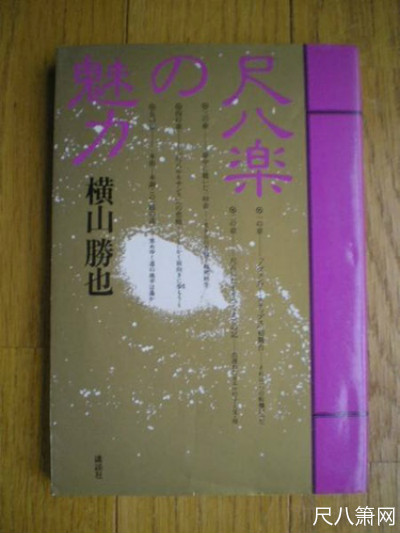
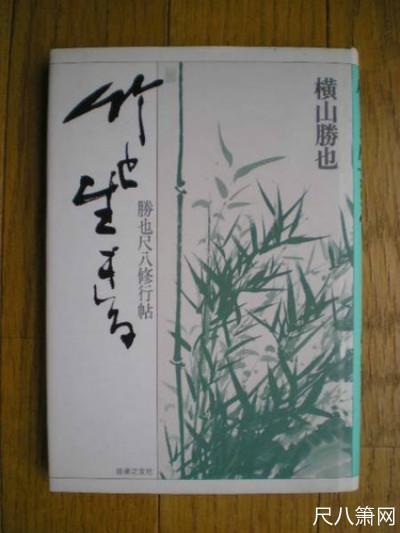
转自台湾山城老师博客:blog.xuite.net/shakuhachi.taiwan
评论列表: